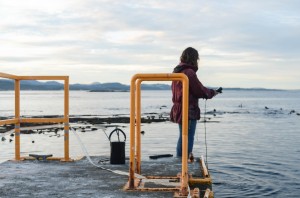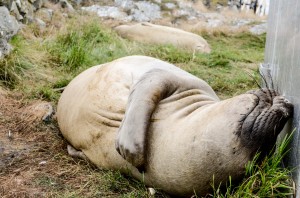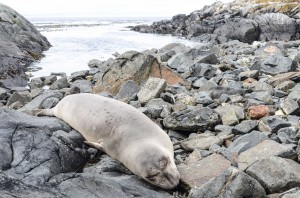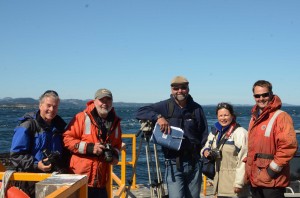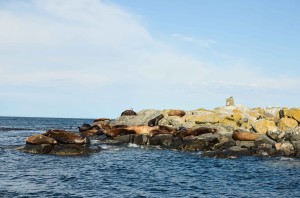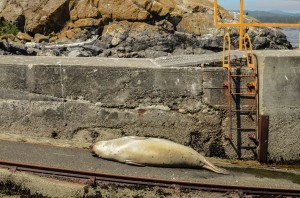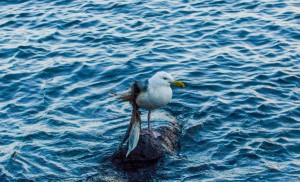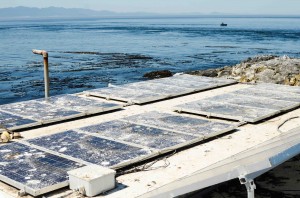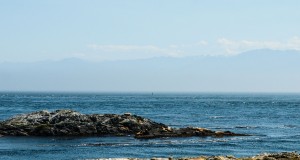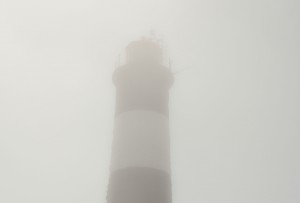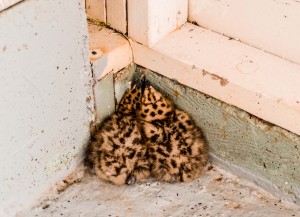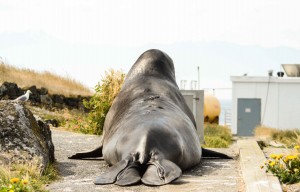Saturday evening when collecting the water sample, I noticed the familiar glow of Noctiluca scintillans, a type of dinoflagellate that when agitated by movement in the water, lights up; a process known as bioluminescence. A curious mammal approached me on the jetty when I realized it was a female elephant seal, which haven’t frequented the island for a number of weeks now. The female didn’t come onto the main island until the following afternoon, and I suspect she is the same one that came most recently about a month ago in early July. She has returned to her usual hangout spot next to the hose box.
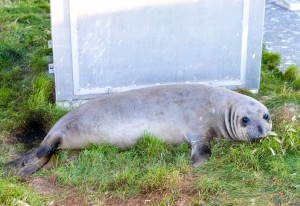
Juvenile female elephant seal
Illegal fishing on the reserve is hard to moderate although remains an important role of the reserve. Today I came across two Glaucous-winged gull chicks picking at what seemed to be a worm, but turned out to be fishing tackle some adult gull had probably returned with from the kelp beds.
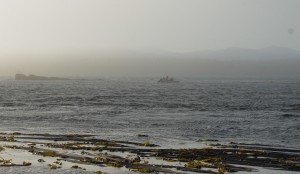
Fisher in a kelp bed near West Race Rocks
These unexpected fisherman, above, claimed ignorance when I approached them about fishing poles in the water.
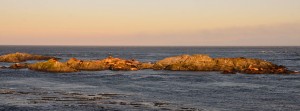
Sea lions at sunset
California sea lions have joined the Stellars on the southern rock.

